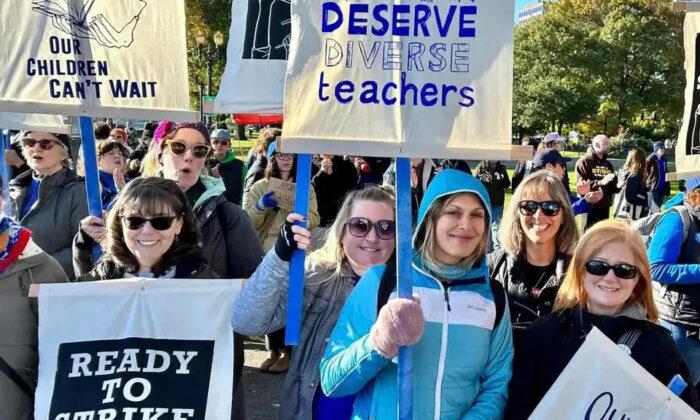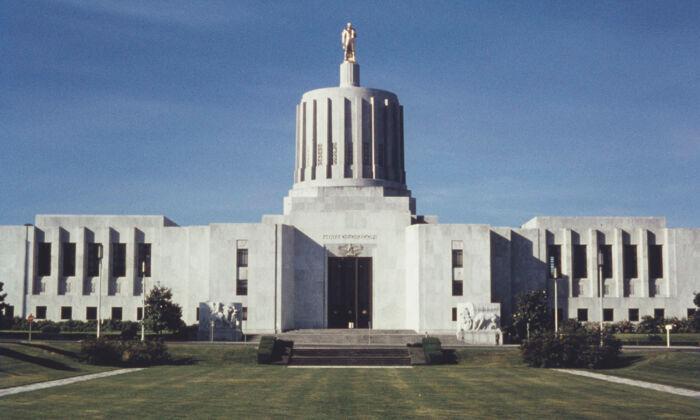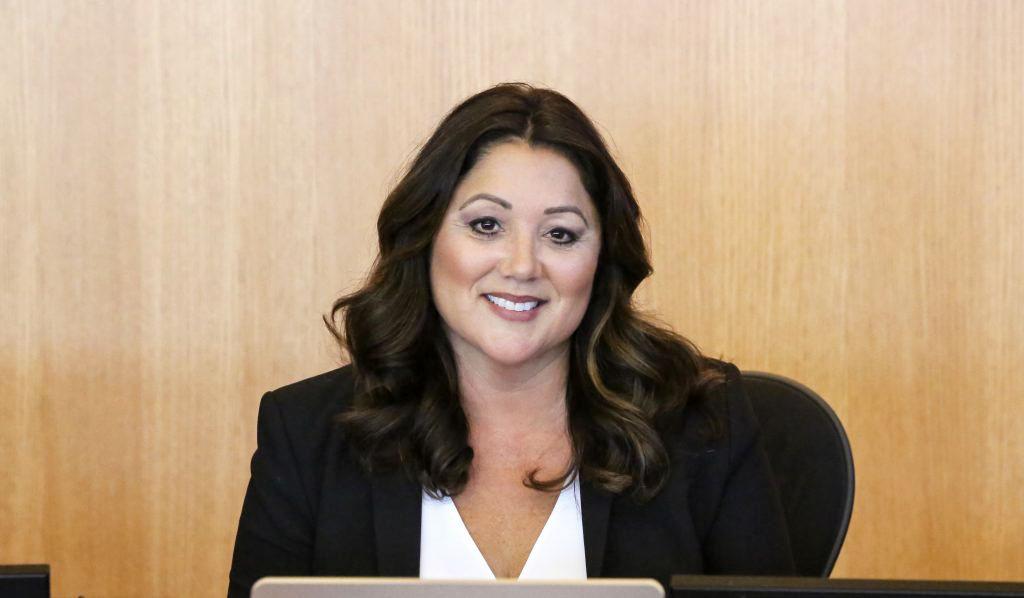Classes are canceled in Oregon’s largest school district this week as the Portland Public School (PPS) teachers union went out on strike on Nov. 1.
The strike affects nearly 49,000 students and 4,500 educators across 81 campuses.
This is the first teachers’ strike in PPS history.
The Portland Association of Teachers (PAT) union confirmed the strike shortly after 7 p.m. on Oct. 31, saying that it and the district were unable to reach an agreement on a new three-year contract after months of negotiation.
The chief sticking points include wages, class size, and teacher planning time.
A union news release stated that the district’s final proposal didn’t make the “real investments” needed to “build safe, properly maintained, and fully resourced schools in every neighborhood.”
“Portland educators were hopeful we could reach an agreement with the district that meets the needs of students and educators, so we could be in school with our students,” said Samara Bockelman, school counselor at Beaumont Middle School and PAT bargaining team member.
“Unfortunately, after more than 12 months of bargaining, district leaders weren’t willing to make the investments necessary to ensure every Portland student has the resources they need to thrive.”
Meanwhile, PPS negotiators reported on Oct. 30 that the PAT was refusing to respond to a proposal made the week before and that some of their demands just could not be met.
“Both class size limits and the union’s planning proposal will create mandatory staffing levels, requiring us to hire over 500 new teachers when we have declining enrollment,” Dr. Renard Adams, chief of research, assessment, and accountability at PPS, and a member of the district’s bargaining team, said on Oct 31.
“The union’s proposal would cost more than $220 million above our current offer, which is simply not feasible,” according to a school district letter sent to PPS families on Oct. 31.
“Strike or no strike, our fixed revenue limits all. It is our reality,” added Dr. Adams.
Dr. Adams said the district had asked the union to keep schools open and continue negotiating.
He also said the district had made a new offer to teachers.
“We offered elementary teachers exactly what PAT proposed, 440 minutes of planning time. We offered contract language to ensure healthy and safe schools,” Dr. Adams said.
A list of teacher grievances published in an Oct. 31 National Education Association (NEA) report shows the district has its work cut out for it.
Teachers Cite Social Issues
“Portland teachers have been negotiating for months—but they still haven’t gotten what they and their students need,” wrote the NEA in a summary called “50 Reasons why Portland teachers are striking.”
As costs have risen in Portland, teachers’ salaries haven’t kept up, according to the report.
“If Portland wants to retain its teachers, it needs to pay them enough money to pay their bills,” the NEA claimed.
Students need more support than ever, it continued.
“I have a 2nd grader who went from Columbia to Venezuela to here, and you can tell by how he carries himself that he’s had a lot of lived experiences,” said PAT English teacher Beyoung Yu in the report.
Such students need mental health support but the district does not provide it, she said.
Ms. Yu also complained about school facilities. Classroom temperatures top 90 degrees on hot days and drop into the 50s in the winter, she said.
Other teachers report rats and rodent droppings as well as mold in school buildings, according to the NEA report.
Union members want the district to provide “wrap-around services” like preschool beginning at the age of 3, meals and after-school services, and health centers in schools.
Last year, the 36th student assigned to David Scholten’s 5th-grade class was a child who’d never attended school before and spoke no English.
“She needed more support than he could give,” he explained.
“When you have 36 kids, you’re literally just trying to make it through the day,” said Mr. Scholten.
The NEA report claims that PPS has “issues with racial equity” as well.
It says “pay raises are necessary to attract and retain teachers of color.”
Educators also report seeing more violence in their classrooms, noted special education teacher Ginger Huizar.
She said teachers want the district to hire additional staff—like school psychologists, social workers, behavioral specialists, and others, to address student behavior.
The strike will cancel classes on Nov. 1 and Nov. 2. Students were not expecting to attend school on Nov. 3, due to a professional development day.
If the strike continues past Friday, district officials said report cards will be delayed.





